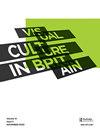Roots & culture: cultural politics in the making of Black Britain
Q2 Arts and Humanities
引用次数: 8
Abstract
Roots & Culture (2017) by Eddie Chambers is a fascinating read. It tells of the narrative, or more accurately narratives, of the migration of peoples of Caribbean descent to Britain. Many came, lured by the promise of a better life with economic possibilities, and uprooted themselves to make a new start in what they thought of as their ‘Mother Country’. But the reality was starkly different, and it took generations before a black British identity emerged. Many historical narratives of the subject document the Windrush experience, the arrival of several hundred Caribbean immigrants at Tilbury Docks in 1948, which transformed British society, and the precursor of subsequent waves of post-war migration that would continue for several decades. Where Chambers’s study stands out is in his ability to chronicle the detail and everyday experiences of a people in forming their cultural identity, which involved a struggle between dual impulses: the desire to assimilate and the need to resist. Integration into a host country involves these two imperatives: to fit in, if only for the sake of keeping one’s head down and avoiding racism, and the need to discover or rediscover one’s own roots and culture. Chambers depicts this battle vividly as he shows how West Indian migrants competed with white Britons for housing and employment, and how they drew on their culture, music, art, literature and inherited traditions to give meaning to their lives and to form their identities. A key aspect of Chambers’s narratives is the significance of generation when thinking about the experiences of migration and settlement. Firstgeneration subjects encountered a different Britain to that experienced by second or future generations. They sought to form alliances on ethnic and cultural grounds and found spaces to build communities of support. Mundane environments such as black hair salons became one such space. While the first generation lay the foundations for their children, the experiences of the latter, of having to grow up through the education system and to make a future, presented different challenges. The shifts of experiences from generation to generation are reflected in the language used to ascribe identity. In the post-war climate, Caribbean migrants described themselves as being ‘West Indian’. This later became supplanted by ‘Afro-Caribbean’, and then subsequently replaced by a composite term, ‘Black British’ in the late 1970s and 1980s, which departed from the specificity of place of migration, instead indicating the emergence of a political consciousness. Second-generation subjects, most of whom were born in Britain, laid a different claim to Britain. It was their根源与文化:黑人英国形成过程中的文化政治
埃迪·钱伯斯的《根与文化》(2017)是一本引人入胜的读物。它讲述了加勒比人后裔移民到英国的故事,或者更准确地说,它讲述了加勒比人后裔移民到英国的故事。许多人是被美好生活和经济机会的承诺所吸引,背井离乡,在他们心目中的“祖国”开始新的生活。但现实却截然不同,黑人英国身份的出现历经了几代人。许多关于这一主题的历史叙述都记录了winddrush经历,1948年数百名加勒比移民抵达蒂尔伯里码头,这改变了英国社会,也是随后持续数十年的战后移民浪潮的先驱。钱伯斯的研究突出之处在于他能够记录一个民族形成其文化认同的细节和日常经历,这涉及到双重冲动之间的斗争:同化的愿望和抵抗的需要。融入一个东道国包括这两件事:一是要融入,哪怕只是为了保持低调,避免种族主义;二是需要发现或重新发现自己的根和文化。钱伯斯生动地描绘了这场斗争,他展示了西印度移民如何与英国白人争夺住房和就业,以及他们如何利用自己的文化、音乐、艺术、文学和继承的传统来赋予自己的生活意义,并形成了自己的身份。钱伯斯叙事的一个关键方面是在思考移民和定居经历时,世代的重要性。第一代臣民遇到了与第二代或后代所经历的不同的英国。他们寻求在种族和文化基础上结成联盟,并找到建立支持社区的空间。普通的环境,如黑色美发沙龙,成为这样一个空间。虽然第一代为他们的孩子奠定了基础,但后者必须通过教育系统成长并创造未来的经历带来了不同的挑战。代际经验的变化反映在用于赋予身份的语言上。在战后的气候中,加勒比移民称自己是“西印度人”。这个词后来被“非裔加勒比人”所取代,然后在20世纪70年代末和80年代被一个复合词“英国黑人”所取代,它脱离了移民地点的特殊性,而是表明了政治意识的出现。第二代臣民大多出生在英国,他们对英国提出了不同的要求。是他们的。
本文章由计算机程序翻译,如有差异,请以英文原文为准。
求助全文
约1分钟内获得全文
求助全文
来源期刊

Visual Culture in Britain
Arts and Humanities-Visual Arts and Performing Arts
CiteScore
0.60
自引率
0.00%
发文量
1
 求助内容:
求助内容: 应助结果提醒方式:
应助结果提醒方式:


